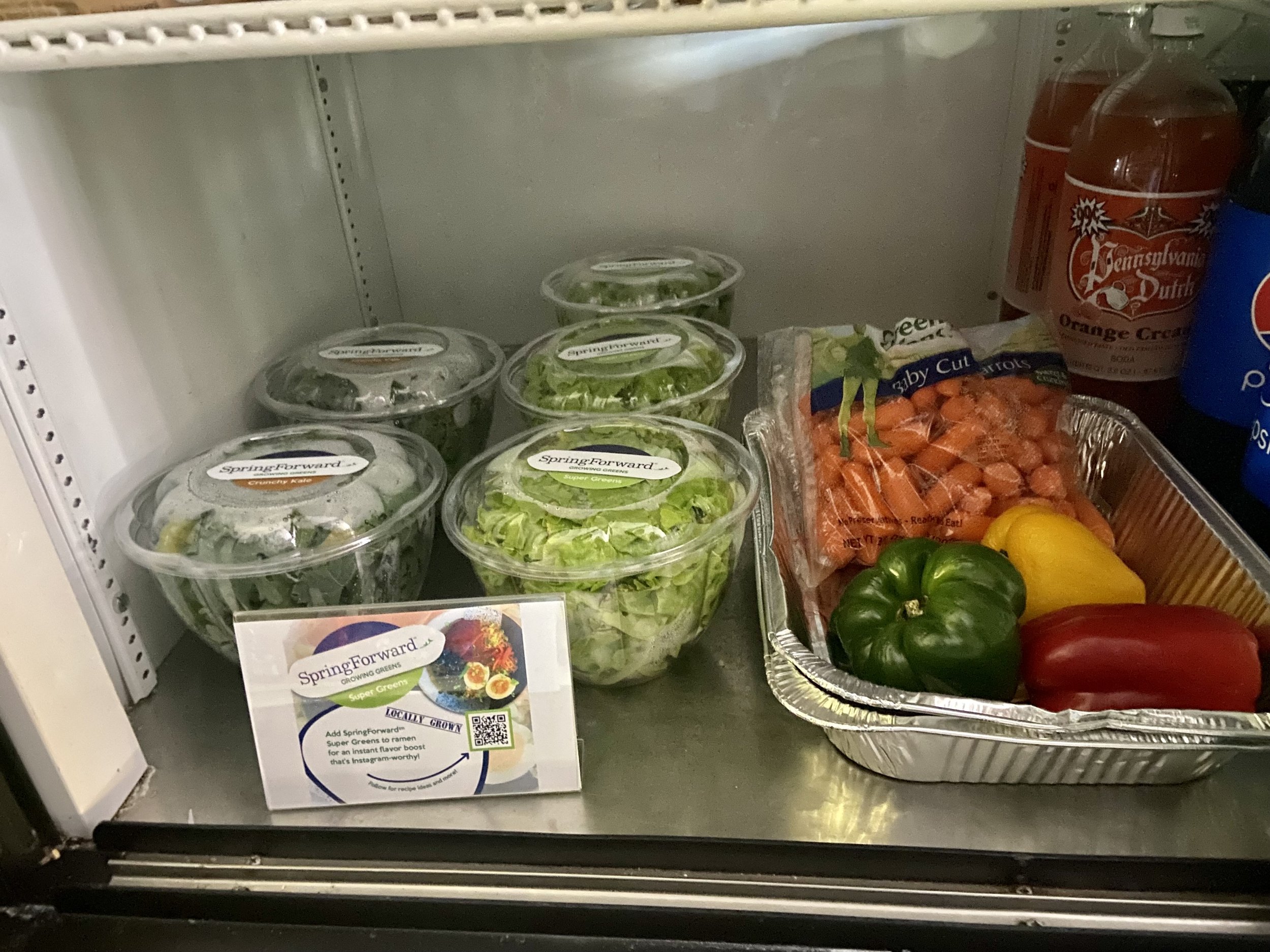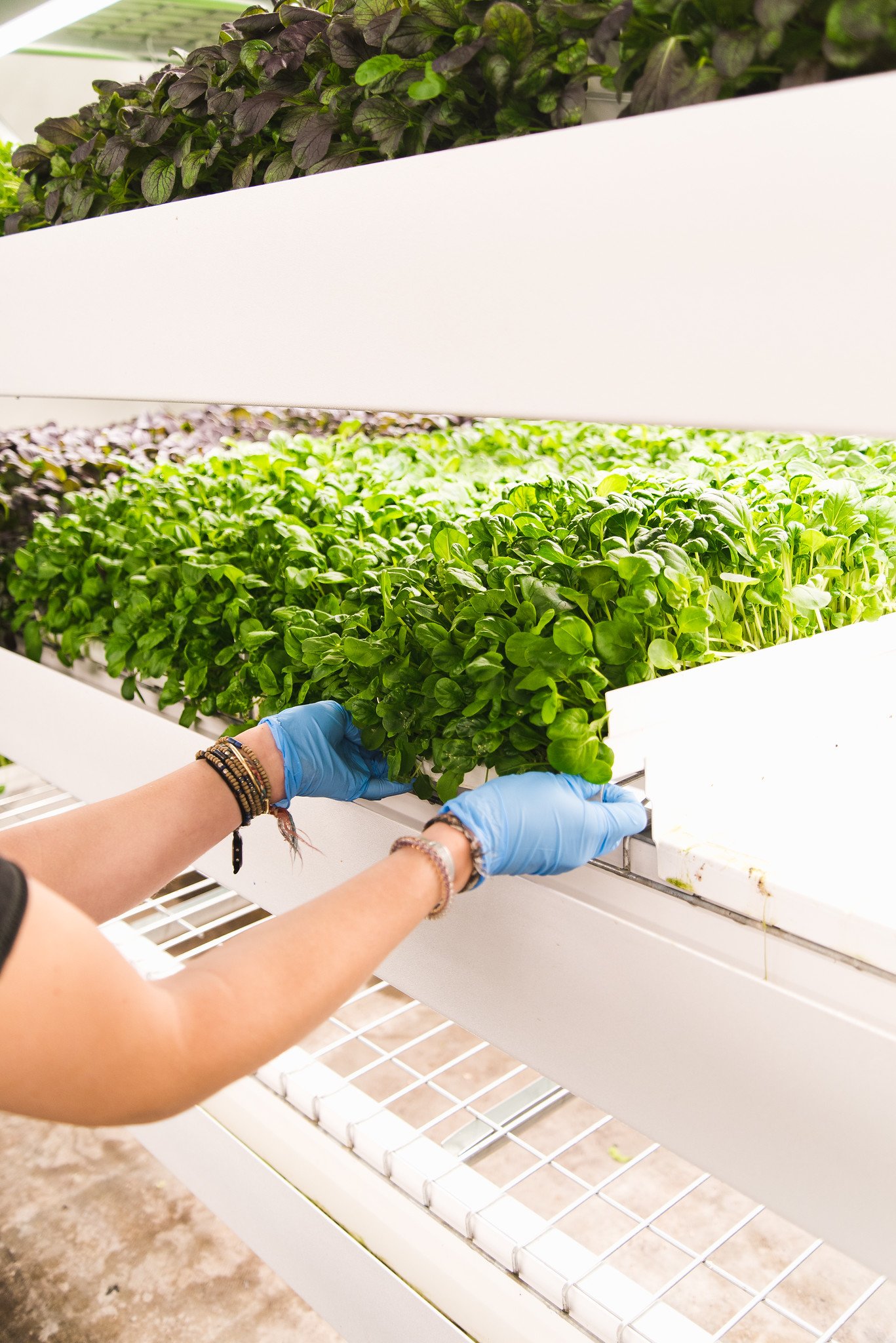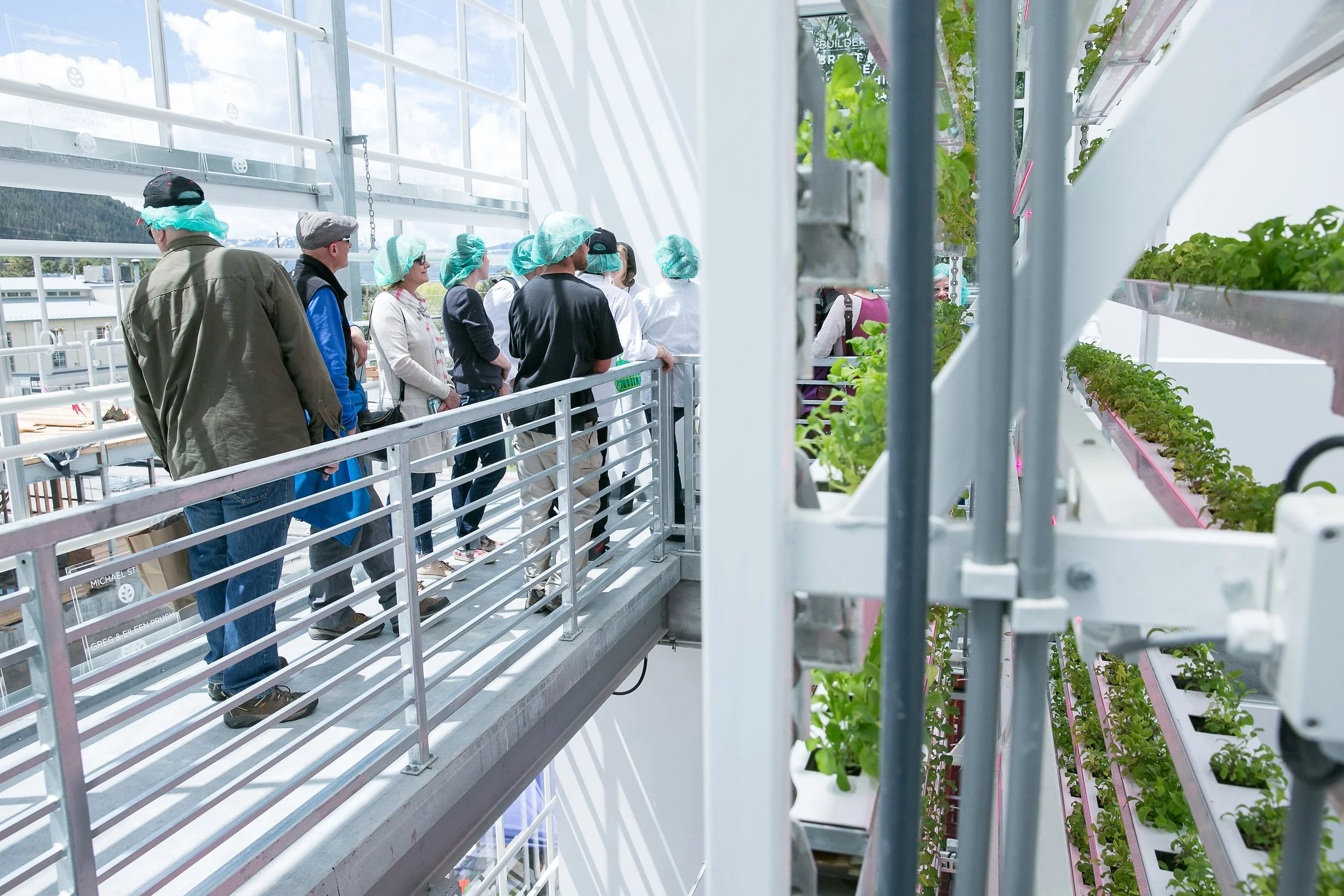Mar 21, 2022
5 Expert Tips For Building Your Own Socially-Impactful Farm
Editor’s Note: This is an investigative article from Agritecture’s Consultant, Sarah Janjua, and Junior Designer, Dhwani Laddha, on how CEA operations can better integrate a mission-driven focus into their businesses. The following information is derived from interviews with Desmond Hayes of GeoGreens, Julie Buisson of the PHILLIPS Programs for Children and Families, and Nona Yehia of Vertical Harvest.
With conscious consumerism on the rise, there is an increased appetite for mission-driven businesses.
A mission-driven business is one that sets out to do more than just maximize profit - typically by aiming to solve a specific social, economic, or environmental challenge in society. When it comes to urban and controlled environment agriculture (CEA), mission-driven business models tend to focus on the environmental pillar. This includes emphasis on mitigating the outsized impacts of conventional farming operations via reduced water usage, lack of pesticides, or decreased food miles.
While these are pressing challenges to tackle, an often underemphasized mission-driven business model in the industry is one that focuses on the social pillar of society. This includes addressing food inequities and having positive impacts on marginalized communities.
Here are three farms that have taken unique approaches to make their businesses more mission-driven through socially impactful farming operations:

Image sourced from Sarah Janjua
GeoGreens Is Growing For Underserved Communities
Messaging around the benefits of healthier eating does not reach everyone equally. Along with this disconnect, locally-grown and nutritionally-dense produce is not always easily accessible for minority communities.
GeoGreens is on a mission to bridge these gaps. Founder and Owner Desmond Hayes “set out on a model and mission to get healthier foods in the hands of those who need it the most.” After years of market research, Hayes determined that one cannot accomplish this mission “by simply getting leafy greens to chain-supermarkets” and that “there needs to be a level of direct community involvement and an educational engagement.” This is what led GeoGreens to seek out the customer segments it has as well as foster different levels of community engagement.
This indoor hydroponics farm located in Hamilton, New Jersey, is growing microgreens, leafy greens, and herbs with a focus on serving schools and institutions, food banks and pantries, soup kitchens, and assisted living facilities. To date, GeoGreens has partnered with an assisted living facility and is working with multiple food pantries and non-profit organizations throughout the state. A partnership with a local soup kitchen is now in place and scheduled to begin within the next few months, where GeoGreens will be providing produce for their salad bar. Hayes notes that “over the next few months, we will be pursuing a few local markets (i.e. non-chain supermarkets)” and “trying our hand in local farmers markets to engage with the community even more.”
Alongside partnering with local entities, GeoGreens has hosted around 35 tours since opening. Hayes shares: “We had the county school district visit our facility in hopes to help service any schools willing to purchase hyperlocal foods.” Furthermore, GeoGreens “will be working with the district to incorporate CEA more into the local schools’ curriculum via virtual presentations, field trips and school tours of the facility.”

Image sourced from SpringForward
The PHILLIPS Programs Is Creating More Inclusive Workforce Development
The job market is tough for everyone. But, for those with emotional and behavioral health needs, getting or maintaining a job is made even more difficult with a lack of support and challenging work environments acting as additional stressors.
Agritecture’s first-ever client, the PHILLIPS Programs, has been expanding their mission to better support this community. Seeing success with their SpringForward farm that provides ag-based educational services to the community, they’ve noticed “gaps in services provided to students.” Specifically, alumni ended up “unemployed or under-employed” shortly after graduation, “struggling to thrive in the workplace,” shares Business Operations Manager, Julie Buisson.
The board has decided to act by incorporating workforce development into their farming-based educational approach. Buisson adds that “our goal is to build businesses differently” by “customizing the services provided to the needs of our employees rather than forcing them to fit into a pre-existing box.”
This patented EVERY EMPLOYEE approach has resulted in a conventional greenhouse with unconventional amenities - “on-site mental health support,” and “numerous break rooms to accommodate for personal preferences (those who thrive with peer-to-peer interaction versus those who don’t).” While these aspects of a farm operation carry additional costs, the PHILLIPS team believes it “needs to be justified in terms of human value and employee well-being.”
Although the commercial farm is not yet up-and-running, the team has received tremendous support from the Baltimore community. They’re looking to build up “a buyer list for once our commercial farm is complete, while training South Baltimore residents and supplementing City of Refuge's food pantry with fresh greens.”

Image sourced from Vertical Harvest
Vertical Harvest Is Generating Opportunities For An Underserved Community
Similarly to the PHILLIPS Programs, the Vertical Harvest team was aware of two key challenges in their remote town of Jackson, WY - the first was “low access to fresh, locally-grown produce,” and the second was “a dearth of meaningful jobs for people with disabilities.”
While the former problem could be tackled by a creatively-designed CEA facility, the latter required more ingenuity.
The team set off on a mission to “address these issues in tandem,” by “bolstering the local food economy” and mobilizing their community for positive social impact. Today, the vertical hydroponic greenhouse not only grows produce for their local market, but also provides inclusive employment for a population that is too often overlooked. The vision now extends well beyond Jackson, as the team is looking “to stand up 10 more hyper-local farms across the country over the next 5 years.”
The journey won’t be easy. Co-Founder Nona Yehia shares that “as we start scaling nationally and positioning ourselves as a player in the CEA industry, we’ve had to educate stakeholders that we’re approaching things differently, and sometimes that can be challenging. You have to challenge the industry’s prevailing winds to make your case, and that can be hard.”
Consumer response, however, has been positive. Yehia adds that “up close and personal, we know we’ve changed lives. Because we focus on ability vs. disability, we’ve helped many of our employees realize their incredible potential. They have promising careers in an emerging green industry poised for explosive growth. Together with the community, we’ve really built something truly special.”
Are you looking to set up your own mission-driven commercial urban farm? Here are the top tips from farms already doing this successfully:

Image sourced from Shivyon Victoria from Out West Photography
-
Work WITH the population you are trying to serve, not FOR them. Buisson adds that you should “take a human-centered design approach to problem-solving to ensure the services provided are in line with real, identified needs of your community.”
-
Mission first. Yehia shares that “from the start, the people have been just as important as the plants and it was non-negotiable for us to have our social impact integrated within, and inseparable from, our core business. Customers are hungry for ‘real good’ not just ‘feel good,’ and you’ll be a better brand for it.”
-
Develop strong partnerships with mission-aligned allies. Buisson adds that “mission-driven farms come with higher costs than conventional competitors. From city officials, to other non-profits, to vendors and buyers, it is important to have people along the way that understand what you are doing, why you are doing it, and who are willing to do their part in helping you get there.”
-
Invest in your team. Buisson adds that you need to have “a robust, diversified team, with differing but complementary areas of expertise.”
-
Be willing to differentiate yourself. Hayes shares that as a CEA operation, you need to “be cognizant of your competition, but establish your own model and mission. Not every operation or company is the same, nor should they be. The goal should not be to mimic the competition, but to make the field more efficient and servicing.”



